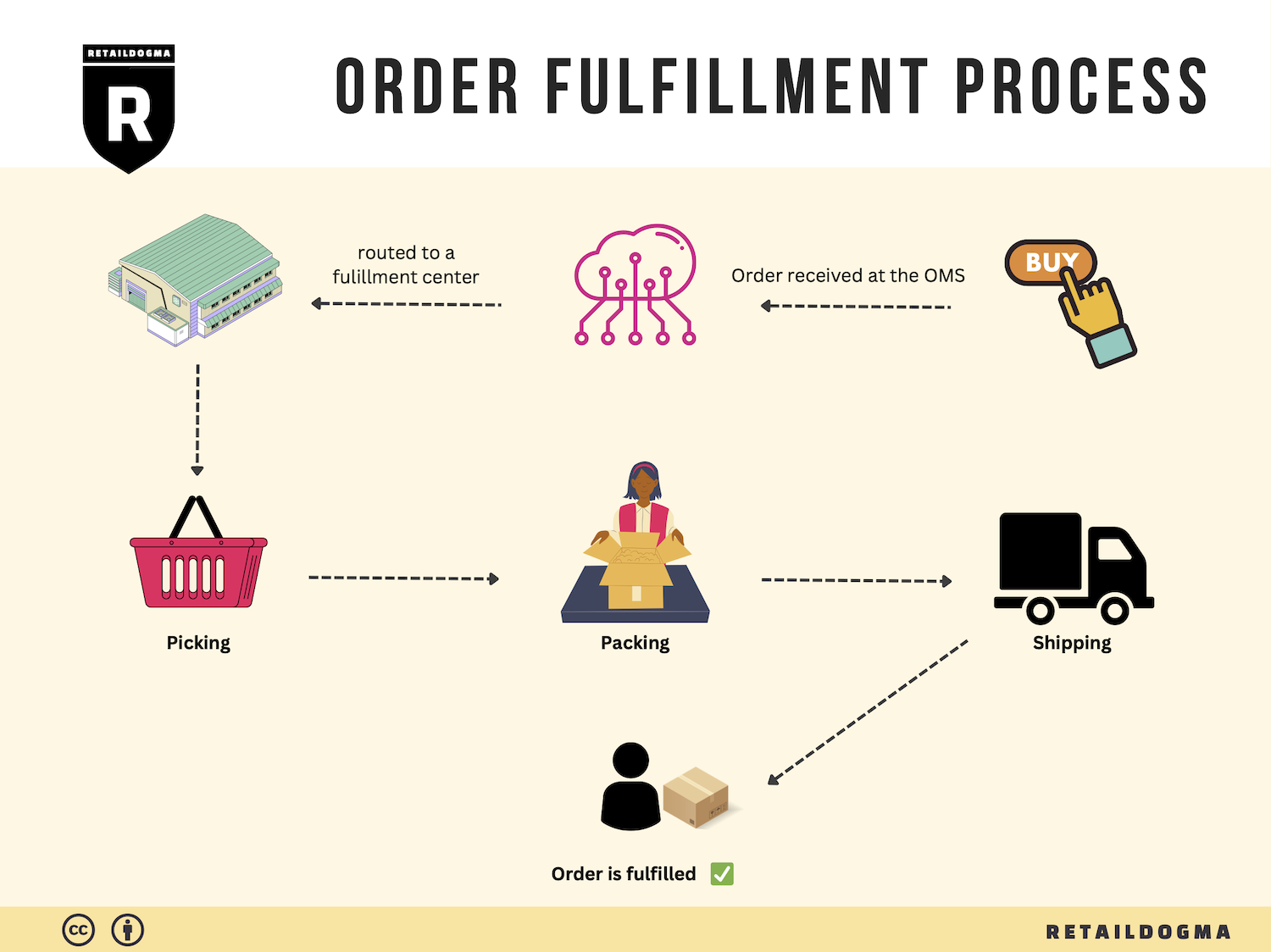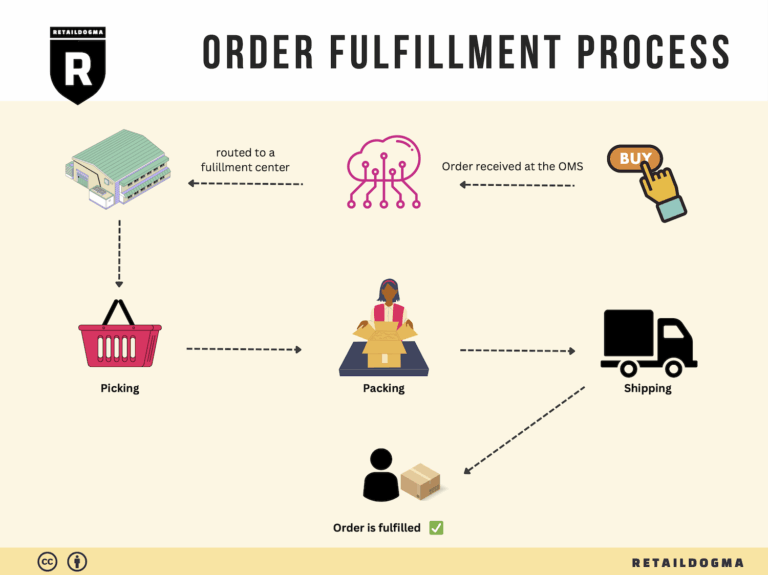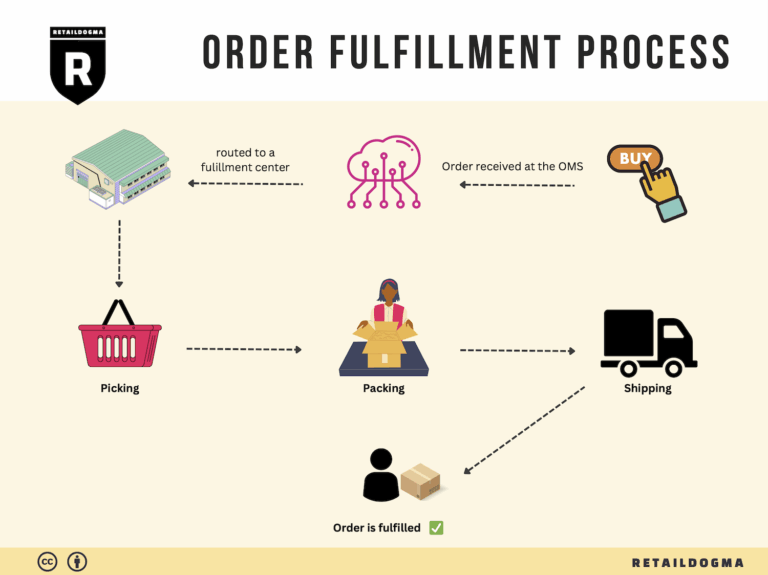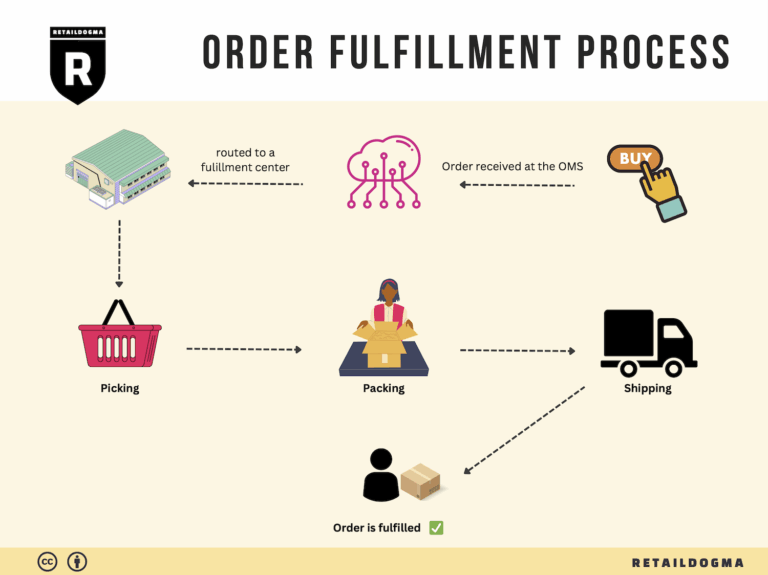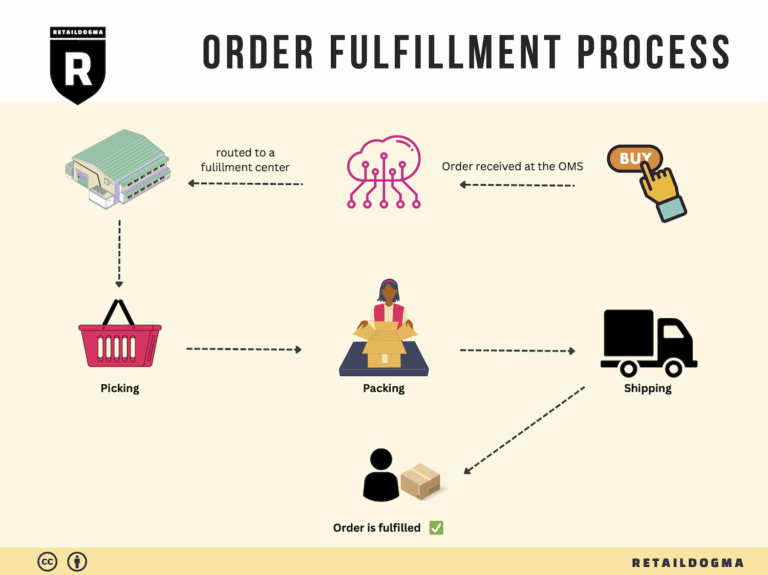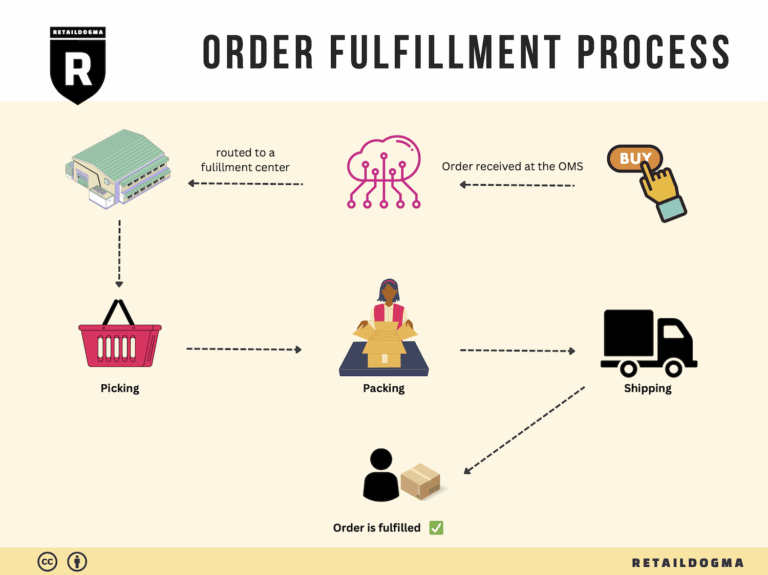Ecommerce Fulfillment Services: The Ultimate Guide (2025)
What is E-commerce Fulfillment? An Introduction for Growing Businesses
Understanding the Fulfillment Process
As an e-commerce business owner, you may find yourself overwhelmed by the logistics of packing and shipping orders. The excitement of growing sales can quickly turn into frustration as the complexities of order fulfillment begin to pile up. Whether you’re managing a small online shop or scaling a larger operation, ensuring that products reach customers efficiently is crucial to maintaining satisfaction and driving repeat business.
At its core, e-commerce fulfillment is the process of getting a product from your inventory to your customer’s doorstep. This involves several key stages, including receiving inventory, storing products, processing orders, packing items, and shipping them out. As your business grows, mastering this process becomes even more essential, and many entrepreneurs find themselves exploring various fulfillment options to streamline operations.
This guide will provide an in-depth look at different fulfillment models available to online businesses, such as Third-Party Logistics (3PL) and Fulfillment by Amazon (FBA). Each model has its own advantages and can significantly impact your operational efficiency, shipping times, and customer satisfaction.
We will also cover the core services offered by fulfillment partners, including inventory management, order processing, shipping, and returns handling. Understanding these services will help you evaluate potential partners and ensure they align with your business needs.
Choosing the right fulfillment partner is a pivotal decision that can influence your business’s growth trajectory. We’ll discuss critical factors to consider when selecting a partner, such as location, technology capabilities, and customer service quality.
Pricing is another crucial aspect of fulfillment that can affect your bottom line. This guide will break down the various pricing structures you might encounter, from flat fees to variable costs based on order volume, helping you to budget effectively and avoid unexpected expenses.
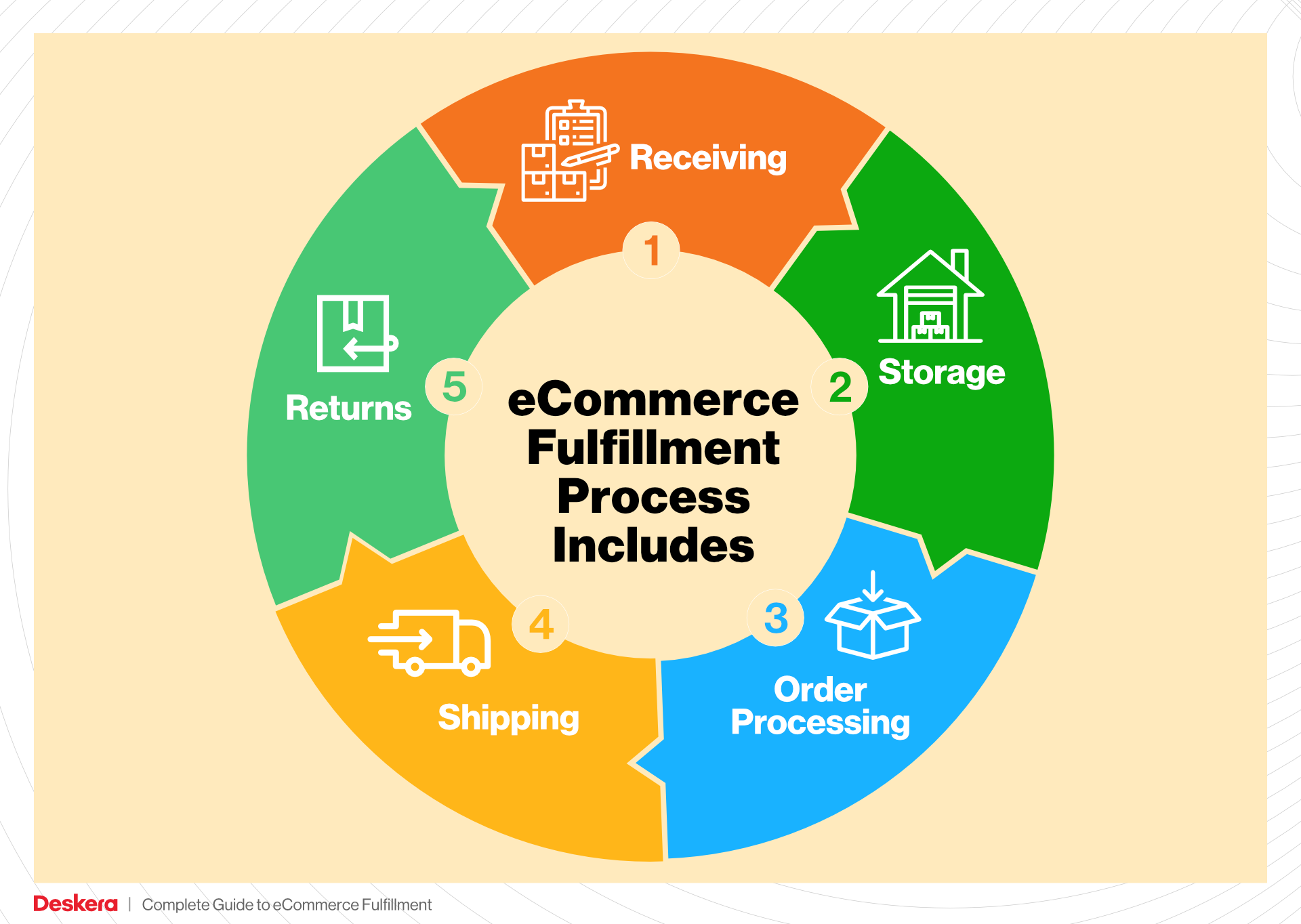
Ultimately, the goal of this guide is to empower you to make informed decisions about your logistics. By understanding e-commerce fulfillment and exploring the options available, you can optimize your operations, enhance customer satisfaction, and position your business for sustainable growth. With the right strategies in place, you’ll be well-equipped to navigate the complexities of fulfillment and focus on what you do best—growing your business.
What You’ll Learn In This Guide
- What is E-commerce Fulfillment? An Introduction for Growing Businesses
- The Order Fulfillment Process: From ‘Buy’ Button to Customer’s Door
- Comparing Fulfillment Models: In-House vs. 3PL vs. Dropshipping
- A Deep Dive into Amazon FBA: Pros, Cons, and Who It’s For
- Core Services Offered by Fulfillment Centers
- How to Choose a Fulfillment Partner: A 6-Point Checklist
- Understanding Fulfillment Pricing: A Breakdown of Common Fees
- Frequently Asked Questions (FAQs) about Fulfillment
- Conclusion: Is Outsourcing Fulfillment the Right Move for Your Business?
- Important Disclaimer
The Order Fulfillment Process: From ‘Buy’ Button to Customer’s Door
1. Receiving Inventory
The first step in the order fulfillment process is receiving inventory. When products arrive at the fulfillment center, they must be checked against purchase orders to ensure accuracy. This involves inspecting the quantity and quality of the items, as well as confirming that they match the specifications agreed upon with suppliers. A key term associated with this step is SKU (Stock Keeping Unit), which is a unique identifier for each product that helps in tracking and managing inventory efficiently.
Receiving inventory is crucial because it sets the foundation for all subsequent processes. If errors occur at this stage, it can lead to stock discrepancies, fulfillment delays, and ultimately, customer dissatisfaction. Properly receiving inventory ensures that the warehouse has the right products in the right amounts, enabling smooth operations throughout the fulfillment process.
2. Warehouse Storage
Once the inventory is received, the next step is warehouse storage. This involves organizing products in a way that maximizes space and facilitates easy access. Items are typically stored in designated locations based on their SKU, size, and demand. Advanced warehousing systems often utilize bin locations to specify where each product is stored.
Efficient warehouse storage is essential for optimizing the picking process. When items are stored logically, it reduces the time employees spend searching for products, which can significantly speed up order fulfillment. Additionally, well-organized storage helps minimize the risk of errors, ensuring that the right products are picked for each order.
3. Order Picking
Order picking is the process of selecting the right products from the warehouse to fulfill customer orders. This step can involve various methods, including batch picking, where multiple orders are picked simultaneously, or zone picking, where pickers are assigned specific areas of the warehouse. A critical tool in this process is the pick list, which details the items and quantities needed for each order.
This stage is vital as it directly impacts order accuracy and fulfillment speed. Errors in picking can lead to incorrect shipments, resulting in returns and increased costs. By employing effective picking strategies and utilizing technology such as handheld scanners or automated picking systems, businesses can enhance accuracy and efficiency, ultimately improving customer satisfaction.
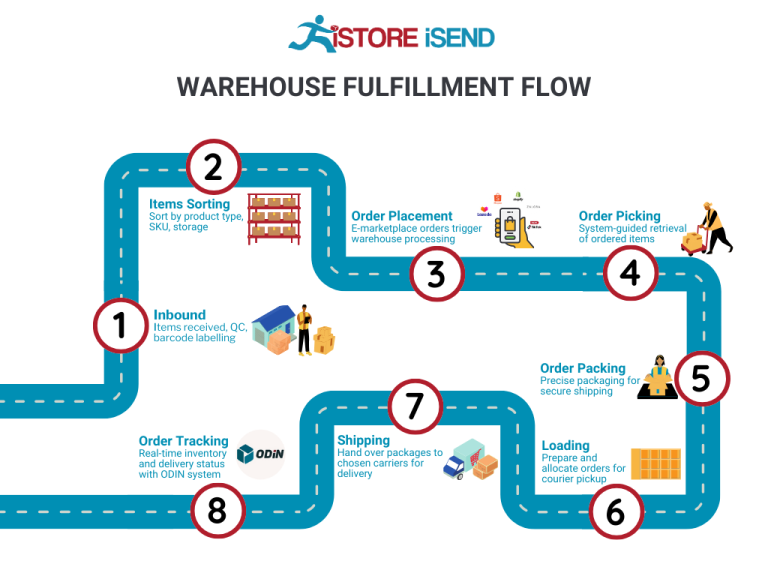
4. Order Packing
After items have been picked, they move to the packing stage. Here, products are carefully packaged to ensure they arrive safely at the customer’s door. Packing involves not just placing items in boxes but also including necessary documentation, such as invoices and return instructions. The use of packing slips—which summarize the items included in the shipment—is common in this process.
Packing is crucial for protecting products during transit and ensuring that customers receive exactly what they ordered. Proper packing minimizes the risk of damage, which can lead to costly returns and dissatisfied customers. Additionally, efficient packing processes can optimize shipping costs by reducing dimensional weight and ensuring that the most appropriate shipping methods are used.
5. Shipping & Delivery
The final step in the order fulfillment process is shipping and delivery. Once orders are packed, they are labeled and prepared for shipment through chosen carriers. This stage involves logistics planning to determine the most efficient routes and methods for delivery. A key term here is last-mile delivery, which refers to the final leg of the shipping journey, where the package is delivered to the customer’s location.
Shipping and delivery are critical components of the customer experience. Timely and accurate delivery can significantly enhance customer satisfaction and loyalty. By leveraging technology such as tracking systems and route optimization software, businesses can provide customers with real-time updates and improve delivery efficiency. This not only boosts customer confidence but also helps in managing operational costs effectively.
In conclusion, understanding and optimizing each step of the order fulfillment process—from receiving inventory to shipping and delivery—are essential for e-commerce businesses aiming to scale. By focusing on efficiency, accuracy, and customer satisfaction, businesses can build a robust fulfillment strategy that supports growth and enhances their competitive edge in the market.
Comparing Fulfillment Models: In-House vs. 3PL vs. Dropshipping
Fulfillment Models Overview
When scaling an e-commerce business, choosing the right fulfillment model is crucial for optimizing operations, managing costs, and enhancing customer satisfaction. Here, we compare three predominant fulfillment models: In-House Fulfillment, Third-Party Logistics (3PL), and Dropshipping. Each model has its own unique characteristics, advantages, and challenges that can impact your business’s growth trajectory.
Comparison Table
| Model | Who Handles Inventory | Best For (Business Stage) | Key Advantage | Key Disadvantage |
|---|---|---|---|---|
| In-House Fulfillment | Business itself | Established businesses | Full control over inventory and operations | High overhead costs and resource-intensive |
| Third-Party Logistics (3PL) | Third-party provider | Growing businesses | Scalability and reduced operational burden | Less control over inventory and potential service variability |
| Dropshipping | Supplier | Startups and small businesses | Low startup costs and no inventory management | Lower profit margins and reliance on supplier reliability |
In-House Fulfillment
In-house fulfillment refers to a model where a business manages its own inventory and logistics operations. This model is most suitable for established businesses with sufficient resources and a stable order volume. By handling fulfillment internally, companies retain full control over their inventory, allowing for customized processes tailored to their specific needs and direct oversight of product quality. This level of control can enhance customer satisfaction, as businesses can ensure timely order processing and accurate shipments.
However, the drawbacks of in-house fulfillment are significant. The model typically involves high overhead costs, including warehousing, staffing, and technology investments. Additionally, as order volumes fluctuate, businesses may face challenges scaling operations efficiently. This model requires substantial time and resource commitment, which may divert focus from core business activities such as marketing and product development.
Third-Party Logistics (3PL)
Third-party logistics (3PL) is a fulfillment model where a business outsources its logistics and inventory management to an external provider. This option is often favored by growing businesses that need to scale quickly without the burden of managing logistics internally. By partnering with a 3PL, companies benefit from the provider’s expertise, technology, and infrastructure, allowing them to focus on their core competencies.
The primary advantage of utilizing a 3PL is scalability. As businesses grow, 3PLs can easily adjust to increased demand without requiring the business to invest in additional warehousing or staffing. Additionally, 3PLs often have established relationships with shipping carriers, which can lead to reduced shipping costs and improved delivery times. However, the key disadvantage lies in the loss of control over inventory and logistics processes. Variability in service quality among 3PL providers can also impact customer satisfaction. Businesses must conduct thorough research to select a reliable partner, as poor service can adversely affect their brand reputation.
Dropshipping
Dropshipping is a fulfillment model where a retailer does not hold inventory but instead transfers customer orders directly to a supplier who ships the products to the customer. This model is particularly well-suited for startups and small businesses with limited capital, as it eliminates the need for upfront inventory investment. Entrepreneurs can test new products and markets with minimal financial risk, allowing for agile adaptations based on customer demand.
The primary advantage of dropshipping is the low startup cost and reduced operational burden, as businesses do not need to manage inventory or fulfillment logistics. However, dropshipping also comes with significant challenges. Profit margins are typically lower compared to other fulfillment models, as businesses must share profits with suppliers. Additionally, reliance on suppliers for product quality and shipping can lead to inconsistencies that may negatively impact customer satisfaction. If a supplier fails to deliver on time or provides subpar products, the retailer bears the brunt of customer dissatisfaction, even though they are not directly responsible for fulfillment.
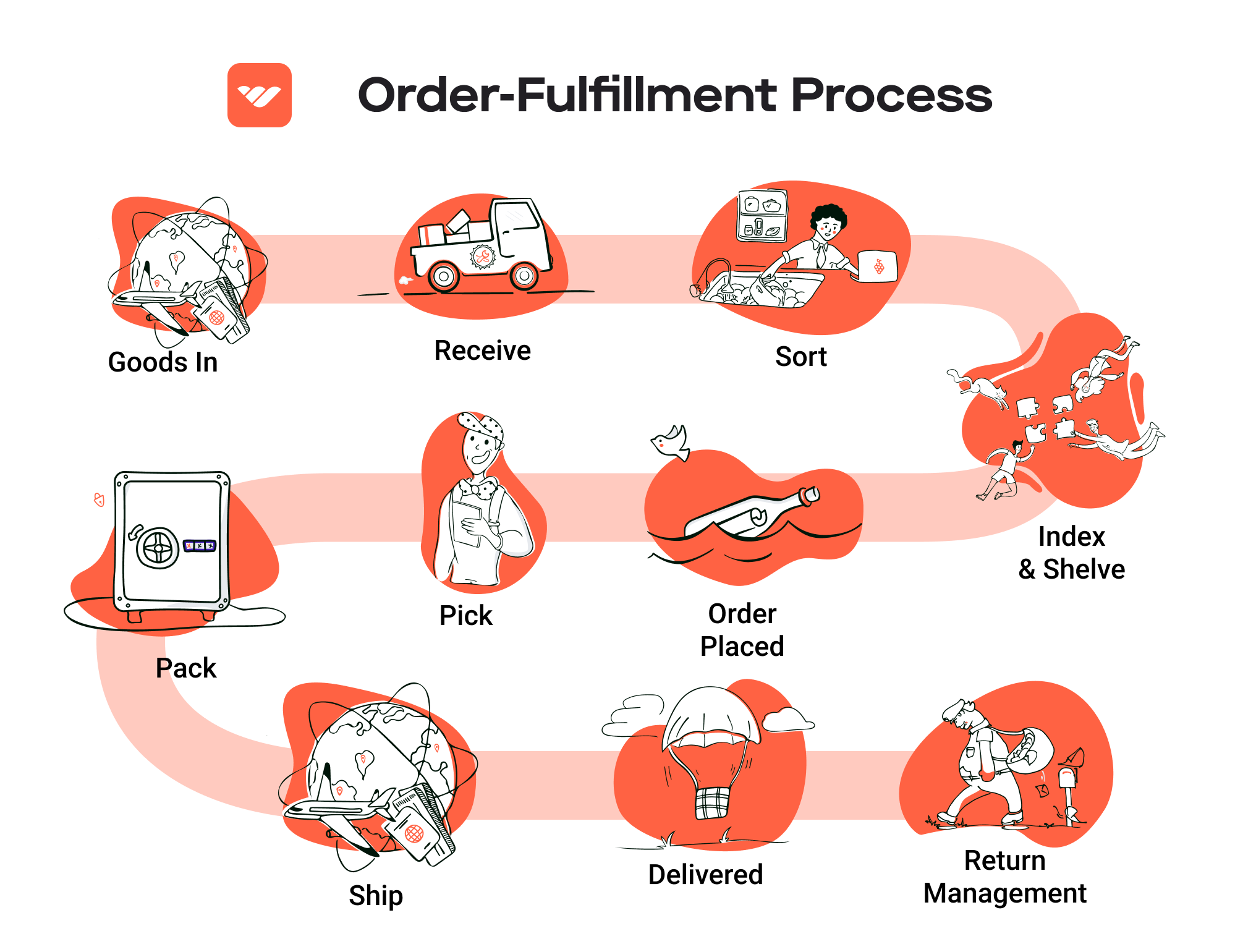
Conclusion
Choosing the right fulfillment model is essential for e-commerce businesses aiming to scale effectively. In-house fulfillment offers complete control but comes with higher overhead costs. Third-party logistics provide scalability and expertise but may result in a loss of control over operations. Dropshipping presents a low-cost entry point for startups but can lead to lower profit margins and potential service issues. Ultimately, the best choice depends on the specific needs, resources, and growth stage of your business. Careful consideration of each model’s advantages and disadvantages will enable you to make an informed decision that aligns with your operational goals and customer expectations.
A Deep Dive into Amazon FBA: Pros, Cons, and Who It’s For
What is Fulfillment by Amazon (FBA)?
Fulfillment by Amazon (FBA) is a service that allows e-commerce sellers to store their products in Amazon’s fulfillment centers. Amazon takes care of storage, packaging, and shipping on behalf of the sellers, enabling them to leverage Amazon’s vast logistics network. This service is particularly beneficial for businesses looking to scale their operations without the overhead of managing their own warehousing and shipping processes.
When a customer places an order for a product fulfilled by FBA, Amazon handles the entire transaction—from picking the item off the shelf to packaging it and shipping it directly to the customer. Sellers also benefit from Amazon’s customer service and returns handling, which can enhance the overall customer experience.
How FBA Works
-
Set Up Your FBA Account: Sellers start by creating an Amazon seller account and enrolling in FBA.
-
List Your Products: After setting up the account, sellers can list their products on Amazon. They can either create new listings or convert existing listings to FBA.
-
Send Inventory to Amazon: Sellers prepare their products according to Amazon’s guidelines and ship them to designated fulfillment centers. Amazon provides shipping plans and guidelines to facilitate this process.
-
Amazon Handles Fulfillment: Once the inventory is received, Amazon stores the products. When a customer orders an item, Amazon picks, packs, and ships the product on behalf of the seller.
-
Customer Service and Returns: Amazon also manages customer inquiries and returns, allowing sellers to focus on other aspects of their business.
Pros of Using FBA
Prime Eligibility
One of the most significant advantages of FBA is the eligibility for Amazon Prime. Products fulfilled by Amazon are automatically eligible for Prime, which offers free two-day shipping to millions of Amazon Prime members. This can significantly increase sales as Prime members tend to prefer products that offer faster shipping options.
Customer Trust
Amazon is a trusted name in e-commerce. By using FBA, sellers can leverage Amazon’s reputation for reliability and customer service. This trust translates to higher conversion rates and can enhance a seller’s credibility in the marketplace.
Multi-Channel Fulfillment
FBA allows sellers to fulfill orders not only on Amazon but also on other sales channels, such as their own websites or other marketplaces. This multi-channel fulfillment capability enables businesses to centralize their logistics operations and streamline their supply chain.
Scalability
FBA is particularly beneficial for scaling businesses. As sales increase, sellers can send more inventory to Amazon without needing to invest in additional warehousing or shipping resources. This scalability allows businesses to focus on growth rather than logistics.
Advanced Logistics Network
Amazon’s extensive logistics network provides sellers with access to sophisticated warehousing and shipping capabilities. This network can facilitate faster delivery times, which is crucial for maintaining customer satisfaction and competitive advantage.
Cons of Using FBA
High Fees
While FBA offers numerous benefits, it comes with costs. Sellers must pay storage fees for their inventory and fulfillment fees for each item sold. These fees can add up quickly, particularly for low-margin products or sellers with large inventories, impacting overall profitability.
Strict Inventory Rules
Amazon has strict guidelines regarding inventory management, including limits on how much inventory can be stored in their warehouses. Sellers must carefully manage their stock levels to avoid incurring long-term storage fees or having their inventory removed.
Commingling Risks
FBA uses a system called commingling, where inventory from multiple sellers is stored together. This can pose risks for sellers, as they may receive returns that are not their products, or they may face issues with counterfeit goods. Sellers must be vigilant and monitor their inventory closely.
Loss of Control
By outsourcing fulfillment to Amazon, sellers lose some control over the customer experience. While Amazon handles shipping and customer service, sellers may have limited input on packaging and branding, which can affect how their products are perceived by customers.
Complexity of Returns
While Amazon manages returns, the process can be complex for sellers. Returns may not always be handled in a way that is favorable to the seller, and they may incur costs associated with returned items, including restocking fees.
Who is FBA Best For?
FBA is best suited for e-commerce businesses that:
-
Sell High-Volume Products: Businesses with a high turnover of inventory can benefit from the economies of scale that FBA offers. The increased sales volume can offset the fees associated with the service.
-
Desire Rapid Growth: Companies looking to scale quickly can leverage FBA’s logistics capabilities to reach more customers without the burden of managing fulfillment themselves.
-
Focus on Customer Experience: Brands that prioritize customer satisfaction can benefit from Amazon’s trusted customer service and efficient shipping processes.
-
Sell on Multiple Channels: Businesses that sell on their own websites or other platforms can use FBA to streamline their logistics, allowing them to fulfill orders from multiple sources efficiently.
-
Have Limited Storage Space: Sellers without the capacity to store large amounts of inventory can utilize FBA to manage their stock without needing additional warehousing.
In conclusion, while FBA offers powerful advantages for scaling e-commerce businesses, it is essential for sellers to carefully evaluate their product lines, cost structures, and customer engagement strategies before committing to the service. Understanding both the pros and cons will help businesses make informed decisions about whether FBA aligns with their growth objectives.
Core Services Offered by Fulfillment Centers
Inventory Management & Warehousing
Inventory management and warehousing are foundational services provided by fulfillment centers, enabling e-commerce businesses to maintain optimal stock levels while minimizing overhead costs. Fulfillment centers utilize advanced inventory management systems that track stock in real-time, providing businesses with accurate data about their inventory levels, turnover rates, and order history.
The benefits of effective inventory management include:
-
Reduced Holding Costs: By strategically managing inventory, businesses can avoid overstocking, which ties up capital and increases storage costs. Fulfillment centers often provide flexible storage options that adapt to seasonal demands, ensuring that businesses only pay for the space they need.
-
Improved Order Fulfillment Speed: With a well-organized warehouse, fulfillment centers can quickly locate and dispatch products, significantly reducing the time it takes to fulfill customer orders. This speed is crucial in today’s competitive e-commerce landscape, where customers expect fast shipping.
-
Enhanced Visibility and Control: Modern inventory management systems offer businesses insights into their stock levels, sales trends, and supply chain performance. This visibility allows for better decision-making and planning, ultimately leading to increased efficiency and profitability.
Pick and Pack Services
Pick and pack services are essential for ensuring that customer orders are accurately fulfilled and shipped promptly. This process involves selecting items from inventory (picking) and preparing them for shipment (packing). Fulfillment centers employ technology and skilled staff to streamline this process, ensuring high accuracy and efficiency.
Key benefits include:
-
Accuracy in Order Fulfillment: Fulfillment centers utilize barcode scanning and automated systems to minimize picking errors. This accuracy is vital for maintaining customer satisfaction and reducing return rates, which can be costly for e-commerce businesses.
-
Scalability: As e-commerce businesses grow, their order volumes can fluctuate significantly. Fulfillment centers can scale their pick and pack operations to accommodate increased demand during peak seasons without compromising service quality.
-
Custom Packaging Options: Many fulfillment centers offer custom packaging solutions that enhance branding and customer experience. This includes branded boxes, inserts, and eco-friendly packaging options, allowing businesses to create a memorable unboxing experience for their customers.
Kitting and Assembly
Kitting and assembly services involve combining multiple products into a single package or preparing items for sale as a set. This can include bundling items together, assembling products, or creating promotional kits. Fulfillment centers provide these services to help e-commerce businesses streamline their operations and offer unique product offerings.
The advantages of kitting and assembly include:
-
Time Savings: By outsourcing kitting and assembly to fulfillment centers, e-commerce businesses can save time and labor costs. This allows them to focus on core activities like marketing and customer service rather than spending time on manual assembly processes.
-
Enhanced Product Offerings: Kitting allows businesses to create attractive bundles or kits that can drive sales and increase average order value. This strategy can be particularly effective during promotional campaigns, holidays, or special events.
-
Improved Inventory Management: By combining products into kits, businesses can better manage inventory and reduce the number of SKUs they need to track. This simplification can lead to more efficient warehousing and fulfillment processes.
Returns Management (Reverse Logistics)
Returns management, or reverse logistics, is a critical service offered by fulfillment centers that helps e-commerce businesses efficiently handle returned items. This process encompasses receiving, processing, and restocking returned products, ensuring that businesses can minimize losses and maintain customer satisfaction.
The benefits of effective returns management include:
-
Streamlined Processes: Fulfillment centers have established procedures for handling returns, which can significantly reduce the time and labor involved in processing them. This efficiency helps businesses quickly restock items and make them available for resale.
-
Customer Retention: A smooth returns process can enhance customer satisfaction and loyalty. By providing easy return options and timely refunds or exchanges, businesses can maintain a positive relationship with their customers, encouraging repeat purchases.
-
Data Insights: Fulfillment centers can provide valuable insights into return trends, helping businesses identify issues with specific products or categories. This information can guide product development, marketing strategies, and inventory management, ultimately leading to improved profitability.
In conclusion, leveraging the core services offered by fulfillment centers—inventory management and warehousing, pick and pack services, kitting and assembly, and returns management—can significantly enhance the operational efficiency of e-commerce businesses. By outsourcing these functions to specialized providers, businesses can focus on growth and customer engagement while ensuring that their logistics operations run smoothly.
How to Choose a Fulfillment Partner: A 6-Point Checklist
Location & Warehouse Network
Importance:
The geographical positioning of your fulfillment partner’s warehouses can significantly impact your shipping times and costs. A partner with strategically located warehouses can help you reach your customers faster and reduce shipping expenses, which is vital for maintaining competitive pricing and customer satisfaction.
Questions to Ask:
– Where are your warehouses located, and how many do you operate?
– Can you provide coverage maps showing your shipping reach and delivery times?
– Do you have plans for future warehouse expansions or new locations?
Technology & Integrations
Importance:
In today’s fast-paced e-commerce environment, technology plays a crucial role in streamlining operations. Your fulfillment partner should utilize advanced software for inventory management, order processing, and tracking. Seamless integration with your existing e-commerce platforms (like Amazon, Shopify, etc.) is also essential for real-time updates and efficiency.
Questions to Ask:
– What fulfillment technology do you use, and how does it integrate with my e-commerce platform?
– Can you provide examples of how your technology improves order accuracy and speed?
– How often do you update your technology, and what is your process for implementing new features?
Specializations (e.g., Cold Storage, Oversized Items)
Importance:
Not all fulfillment partners are equipped to handle every type of product. If you sell specialized items, such as perishables or oversized goods, you need a partner with the right capabilities. Choosing a partner that specializes in your product type can enhance service quality and reduce the risk of damage or spoilage.
Questions to Ask:
– Do you have experience handling my specific product types (e.g., cold storage, fragile items)?
– What special equipment or facilities do you have in place for these products?
– Can you share success stories or case studies related to your handling of specialized items?
Scalability & Capacity
Importance:
As your business grows, your fulfillment needs will evolve. It’s crucial to partner with a fulfillment provider that can scale operations to match your growth trajectory. They should have the capacity to handle fluctuations in order volume, especially during peak seasons.
Questions to Ask:
– What is your current capacity, and how do you handle increased order volumes?
– Can you accommodate seasonal spikes in demand, and how have you managed this in the past?
– What are your plans for scaling operations in the next few years?
Pricing and Contracts
Importance:
Understanding the pricing structure and contract terms is essential for budgeting and financial forecasting. Look for transparency in pricing and ensure you’re aware of any additional fees that may arise, such as storage fees, pick-and-pack costs, or shipping surcharges.
Questions to Ask:
– What is your pricing model (e.g., per order, per item, monthly fees)?
– Are there any hidden fees or surcharges I should be aware of?
– What are the terms for contract renewal, and is there flexibility for renegotiation based on performance?
Customer Support & Reviews
Importance:
Quality customer support is vital for addressing issues quickly and maintaining smooth operations. Additionally, researching reviews and testimonials from other clients can provide insights into the reliability and service quality of a potential partner.
Questions to Ask:
– What customer support channels do you offer (e.g., phone, email, chat)?
– What are your average response and resolution times for support inquiries?
– Can you provide references or case studies from current or past clients?
Conclusion
Choosing the right fulfillment partner is a critical decision that can significantly influence your e-commerce business’s success. By using this checklist, you can make informed decisions and ensure that your chosen partner aligns with your business goals and operational needs. Take the time to ask the right questions, evaluate potential partners thoroughly, and choose a fulfillment provider that can grow with you and enhance your overall customer experience.
Understanding Fulfillment Pricing: A Breakdown of Common Fees
Initial Setup Fees
Initial setup fees are one-time costs associated with establishing your account with a fulfillment center. These fees can vary widely based on the complexity of your operations and the services you require. Common components of initial setup fees include:
- Account Setup: This covers the administrative costs of creating your account and integrating your systems with the fulfillment center’s software.
- Inventory Onboarding: If you are sending inventory to the fulfillment center, you may incur fees related to the receiving and organizing of your products in their system. This could include labeling, barcoding, or any special handling required for your goods.
To calculate these fees, fulfillment centers typically assess the volume of products you plan to send and the specific services you request. It’s advisable to discuss your needs upfront to get a clear understanding of these costs.
Receiving Fees
Receiving fees are charged for the process of accepting and processing your inventory when it arrives at the fulfillment center. This includes unloading, inspecting, and storing your products. Here are the key aspects:
- Cost Structure: Receiving fees are usually charged per pallet or per item, depending on how your inventory is packaged.
- Additional Handling: If your products require special handling—such as inspection for quality control or repackaging—additional fees may apply.
When estimating receiving fees, consider the total number of shipments and the average size of your pallets or items. Be sure to ask about any volume discounts that may be available for larger shipments.
Storage Fees (per pallet/bin)
Storage fees are ongoing costs associated with keeping your inventory in the fulfillment center. These fees are typically calculated based on the space your products occupy:
- Pallet Storage: If your items are stored on pallets, you will be charged a fee per pallet per month.
- Bin Storage: For smaller items that are stored in bins or shelves, fees may be charged per bin or shelf space utilized.
To calculate storage fees, fulfillment centers will assess the total square footage occupied by your inventory and apply their rate accordingly. It’s important to monitor your inventory levels, as excess stock can lead to increased storage costs.
Pick & Pack Fees (per item/order)
Pick and pack fees cover the labor and materials required to retrieve items from storage and prepare them for shipping. This fee structure can vary based on several factors:
- Per Item Fee: Most fulfillment centers charge a fee for each item picked from inventory. This fee may be lower for larger orders.
- Packing Fees: If your items require special packing materials or customization (such as branded boxes), additional fees may apply.
Understanding your typical order size and composition can help you anticipate these costs. Consider negotiating with the fulfillment center to get better rates based on your order volume.
Shipping Fees
Shipping fees are one of the most significant costs associated with fulfillment and can vary based on multiple factors:
- Carrier Choice: Fulfillment centers typically partner with various shipping carriers (e.g., UPS, FedEx, USPS). Rates may differ based on the carrier you choose.
- Shipping Speed: Express shipping options will incur higher fees than standard shipping. It’s crucial to evaluate the trade-off between speed and cost.
- Destination: Shipping costs can also vary based on the delivery location. Shipping to remote areas may attract higher fees.
To get an accurate understanding of shipping fees, request quotes based on different shipping options and destinations. This will help you gauge potential costs and plan your pricing strategy accordingly.
Tips for Getting an Accurate Quote
-
Provide Detailed Information: When requesting quotes, provide detailed information about your product types, volumes, and specific services needed. This will help fulfillment centers give you a more precise estimate.
-
Ask About Discounts: Inquire about potential discounts for larger volumes or long-term contracts. Many fulfillment centers offer tiered pricing based on order volume.
-
Compare Multiple Providers: Don’t settle for the first quote you receive. Compare offerings from multiple fulfillment centers to ensure you’re getting the best value for your needs.
-
Review Contract Terms: Pay close attention to contract terms, including any additional fees that may apply, such as overage fees for exceeding storage limits or penalties for late shipments.
-
Negotiate: Don’t hesitate to negotiate terms and pricing. Many fulfillment centers are willing to adjust their fees to secure your business.
By understanding these common fees and how they are calculated, e-commerce business owners can better manage their logistics costs and make informed decisions about their fulfillment strategies.
Frequently Asked Questions (FAQs) about Fulfillment
1. What is the Amazon Fulfillment Center in Middletown?
The Amazon Fulfillment Center in Middletown is a state-of-the-art logistics facility designed to streamline the storage, packing, and shipping of products sold on Amazon. It utilizes advanced technologies, including robotics and automated systems, to enhance efficiency and speed in processing orders.
2. How does the Middletown Fulfillment Center differ from a traditional warehouse?
A traditional warehouse primarily focuses on storage, whereas a fulfillment center is designed for the entire order processing operation. This includes receiving products, storing them, picking items for orders, packing them, and shipping them directly to customers. Fulfillment centers are geared toward fast, efficient order fulfillment to meet customer demand.
3. What is a 3PL (Third-Party Logistics)?
A 3PL is a service provider that manages a company’s logistics and supply chain operations. This can include warehousing, fulfillment, shipping, and distribution. Companies often utilize 3PLs to scale their operations without investing in their own infrastructure, allowing them to focus on core business activities.
4. How much do fulfillment services cost?
The cost of fulfillment services can vary widely based on factors such as the volume of orders, the size and weight of products, and specific service requirements. Generally, costs may include storage fees, picking and packing fees, shipping charges, and any additional services like returns management. It’s important for businesses to evaluate these costs against their operational needs to find a suitable solution.
5. What types of products can be fulfilled at the Middletown center?
The Middletown Fulfillment Center can handle a wide range of products, from small consumer goods to larger items. However, certain restrictions may apply based on product type, size, and shipping regulations. It’s advisable for sellers to check Amazon’s guidelines to ensure their products are eligible for fulfillment.
6. How does Amazon ensure fast shipping from the Middletown Fulfillment Center?
Amazon employs advanced logistics technology and a network of fulfillment centers strategically located to optimize delivery times. The Middletown center, part of this network, uses automation, data analysis, and efficient routing to ensure that products are picked, packed, and shipped quickly, often within the same day.
7. What are the job opportunities at the Middletown Fulfillment Center?
The new fulfillment center is expected to create between 700 to 1,000 jobs, ranging from entry-level positions to technical roles. Opportunities may include warehouse associates, operations managers, and logistics coordinators. Interested candidates should regularly check Amazon’s careers page for openings.
8. Can small businesses benefit from using Amazon’s fulfillment services?
Yes, small businesses can greatly benefit from using Amazon’s fulfillment services. By leveraging Amazon’s infrastructure, small businesses can access advanced logistics capabilities, improve delivery times, and enhance customer satisfaction without the overhead costs of managing their own fulfillment operations.
9. What technology is used in the Middletown Fulfillment Center?
The Middletown Fulfillment Center is equipped with cutting-edge technology, including robotics for picking and packing, automated sorting systems, and advanced inventory management software. These technologies help streamline operations and reduce the time it takes to fulfill orders.
10. How can businesses get started with Amazon Fulfillment?
To get started with Amazon Fulfillment, businesses need to create an Amazon Seller account and select the Fulfillment by Amazon (FBA) option. From there, they can set up their inventory for fulfillment, determine shipping methods, and manage their product listings. Amazon provides comprehensive resources and support to help sellers navigate the process.
Conclusion: Is Outsourcing Fulfillment the Right Move for Your Business?
Evaluating the Benefits of Outsourcing Fulfillment
As e-commerce continues to evolve, many businesses face the crucial decision of whether to manage fulfillment in-house or to outsource it. Leveraging a fulfillment service can offer significant advantages that can facilitate your business growth and operational efficiency.
Time Savings
Outsourcing fulfillment allows you to focus on core business activities such as marketing, customer service, and product development. By handing over logistics to experts, you can reclaim valuable time that can be redirected towards strategic initiatives to enhance customer experience and drive sales.
Scalability
A key benefit of partnering with a fulfillment service is scalability. As your business grows, so do your shipping needs. Fulfillment providers have the infrastructure and resources to scale operations seamlessly, whether you are experiencing a seasonal surge in demand or a rapid increase in overall sales. This flexibility ensures that you can meet customer expectations without the added stress of managing logistics.
Expertise and Technology
Fulfillment centers bring specialized knowledge and advanced technology that can significantly improve your shipping processes. From inventory management systems to automated sorting and packing, these tools enhance efficiency and accuracy, ultimately leading to faster delivery times and higher customer satisfaction.
However, it is essential to choose the right fulfillment partner that aligns with your business goals and values. Assessing their capabilities, technology, and customer service can make a significant difference in your fulfillment strategy.
Next Steps
To determine if outsourcing fulfillment is the right move for your business, consider conducting a thorough audit of your current shipping processes. Identify bottlenecks, inefficiencies, and areas for improvement. This analysis will provide a clearer picture of how a fulfillment partner could enhance your operations and support your growth objectives. Embrace the opportunity to streamline your logistics and position your business for success in the competitive e-commerce landscape.
Important Disclaimer
⚠️ Important Disclaimer
The information in this guide is for educational purposes. Fulfillment services, pricing, and platform features change frequently. Always conduct your own due diligence and consult with providers directly before making business decisions.
